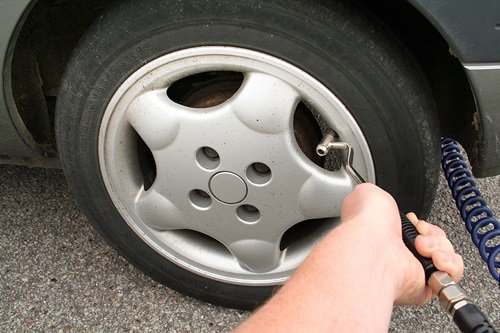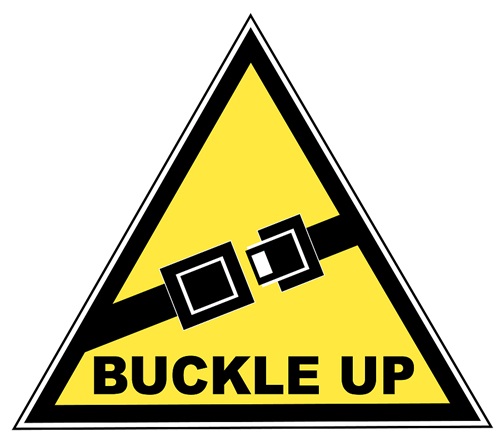Keeping yourself safe on the road has long been a tricky game. Ireland’s road network, with its preponderance of poorly-surfaced, poorly-lit, poorly-equipped country roads, often gives drivers incredibly slim margins for any error, and this year we’ve seen another appalling tide of deaths and injuries on our roads.
The need to be safe on our roads is ever more important as we also need to take more and more heed of other road users, be they pedestrians or cyclists. These people are far more vulnerable to injury than we our in our cars, and with roads becoming more crowded, the chances for an accident to happen become ever higher.
So, what simple tips should you follow to make yourself a safer driver, to protect yourself, your passengers, and everyone around you?
Look around you.
Observation is the ultimate safety tool. Remember when you were sitting your driving test and your parents gave you the tip of offsetting your rear-view mirror a little, so that the tester could see that you were using it? That’s because knowing what’s around , how far away it is, and how fast you’re approaching anything is the biggest critical factor in road safety. Pilots call it ‘situational awareness’ and practicing the art of taking it all in will make you a safer driver quicker than anything. Slowing down helps, of course, but a slow driver who’s paying no attention at all is far more dangerous than someone driving at normal speeds who’s actually taking it all in. Keep your eyes and your head moving, from your instruments (knowing your own speed and keeping within the limits is critical too) to the windscreen to the mirrors and back again. Learn to look around your windscreen pillars — which have become thicker and more vision-obscuring in the last 20 years in the pursuit of structural safety — and always glance over your shoulder, out of the side windows, before making a right or left turn, or changing lanes. Don’t rely on electronic systems such as blind spot indicators or surround-view cameras to pick up everything — electronic sensors don’t pick everything up, but the Mark One Human Eyeball is infallible if used correctly.
Be mechanically sensitive.

Too many drivers regard their car as an appliance, to be switched on or off in the manner of a washing machine or television. Which is entirely the wrong tack to take. Cars, even in age of mechanically simpler electric cars, are complex items which need care and attention to ensure they’re working right. When was the last time you checked your tyre pressures? Or your windscreen washer fluid? Or your oil level? Your brake fluid? Your brake pads? Or even just checked to make sure that your headlights, brake lights, and indicators are all working properly? It only takes a few minutes to do all of these things (well, aside from checking the brake pads, get a specialist to do that for you) and any one of them could prove to be a literal life saver — the tyres especially. Then, get to know your car. Don’t just drive it with your brain switched off. Get to know the steering feel, the brake pedal pressure, the way the car responds in corners and under braking. Knowing all that, instinctively, and knowing how to control your car properly, can mean the difference between having a small skid and having a major accident.
Take a driving course.
There are any number of advanced driving courses you can take, which range from fun-oriented on-track days such as those offered by the likes of Mondello Park and Rally School Ireland, to more cerebral defensive driving coursed offered by the likes of the Institute of Advanced Motorists and the Irish School of Motoring. They’re all useful, even the fun ones. All will teach you about proper car control, and the Mondello and Rally School Ireland ones will show you what happens when a car actually goes out of control and spins around. Once you’ve sampled those sensations in the safety of an on-track environment, you’ll be better equipped to deal with the worst happening on the public road and you’ll learn valuable lessons about car control, braking, and steering. On-road courses can teach you hugely useful things such as — always reverse into a parking space. Why? Because you’re far more likely to hit another car you’ve not seen, or worse a pedestrian or cyclist, if you’re reversing out of a space.
Get the basics right.

None of this will help you, or anyone else, if you’re not doing the most basic road safety things. Such as wearing your seatbelt (a surprisingly large number still don’t), such as never, ever driving after taking a drink (even staying under the legal limit is hugely risky, and don’t get us started about the dangers of ‘morning after’), such as putting your phone down. A recent survey by Aviva Insurance showed that we’re still a country obsessed with using our phones while we drive, and even using hands-free systems can be terribly distracting, so learn good phone etiquette in the car — connect it to the car’s systems, put on a long audiobook or album to listen to, so that you won’t be channel-hopping for content, and then leave it alone until you get where you’re going.
Read the rules of the road.
Be honest, when was the last time you did read the rules of the road? Probably the night before you took your driving test, right? And how long ago was that? You’d be surprised how many rules have changed, and how many of those rules are now subject to penalty points. Did you know it’s illegal to use your phone while driving, even if it’s in a cradle attached to the dashboard? Well, you’d have known that if you read up on it… Reading the rules of the road, even just having an occasional but regular flick through, will keep you up to date and will put the whole idea of road safety into your mind. You’re never too old, nor too experienced, to learn.